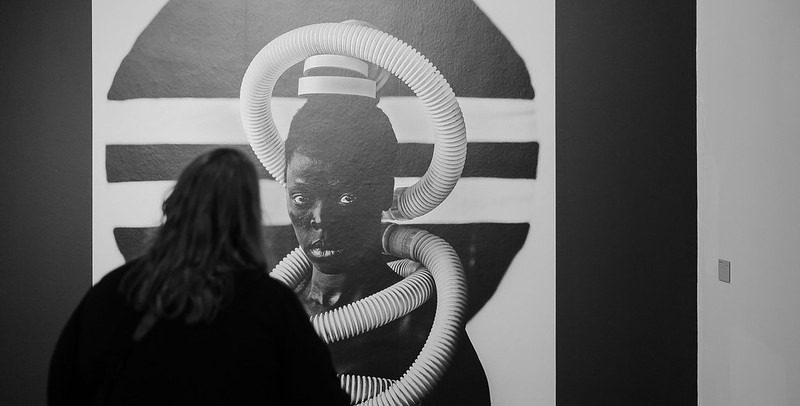Artists who inspire me: Celebrating Black History Month through artwork
Name a painter, any painter, off the top of your head. Normally when we engage in discourse concerning art, we praise the likes of Picasso, Michaelangelo and Da Vinci. In truth, one cannot help but be bewitched by Monet’s playful yet skilled manipulation of imagery or be transported to an alternate dystopian reality when gazing upon the work of Salvador Dalí. Although these artists have made extraordinary contributions to the art world, many others had their brilliance overlooked for a long time. This month, we will celebrate Black artists who brought about profound change within a system designed to work against them.
British Black Arts Movement
For much of history, the art world was dominated by white men. Women’s voices in art and religion were declared obsolete, and those with darker complexions were marginalised and excluded from these spaces. In the words of Haja Marie Kanu: “Black British identity was born out of survival”, which is emphasised in the prominence of the British Black Arts Movement.
In the 1980s, young artists from the West Midlands united to spark what is now known as the British Black Arts Movement. This radical political art movement emerged shortly after the First National Black Art Convention, held at Wolverhampton Polytechnic, with the goal of bringing attention to Afro-Caribbean artists. It was championed by the direct descendants of the Windrush generation, who used their artwork to examine issues of race, gender, and colonialism.
Sonia Boyce: Pillow Case, 1990
‘Pillow Case’ is a vibrant, post-colonial depiction of youth. Using fabric dye, pen, and crayon, Boyce creates a visual dialogue inspired by conversations with young parents, exploring their desires and insecurities. In 2022, she became the first Black woman to represent Great Britain at the Venice Biennale, one of the world’s largest and most prestigious contemporary art exhibitions.
Lubaina Himid: The Carrot Piece, 1985
‘The Carrot Piece’ is a profound illustration of a white man dangling a carrot over the head of a Black woman, who looks back in dismay. Himid uses acrylic, plywood, wood, cardboard, and string to explore the patronising nature of cultural integration for Black individuals within white institutions. Now a professor at the University of Lancaster, Himid won the prestigious Turner Prize in 2017.
Other Iconic Artists
Augusta Savage
Born in Florida, Savage began her career by modelling figures from red clay. She received a scholarship to study in France, but it was withdrawn by the awarding committee upon discovering she was Black. Subsequently, she relocated to New York, where she founded an art studio and became a teacher. One of Savage’s most prominent works is ‘Lift Every Voice and Sing (The Harp)’, created in 1939. The plaster sculpture was inspired by James Johnson’s poem ‘Lift Ev’ry Voice and Sing’ which was later adopted as an anthem of solidarity by the National Association for the Advancement of Colored People (NAACP). It depicts a choir of singers arranged along a gently curved arm like the string of a harp; at the forefront, a man on one knee rested against them. This imagery resonates with the Civil Rights Movement, as the group of singers surrounding the man symbolizes strength in numbers and may also allude to the spiritual guidance of ancestors. The original sculpture was broken due to the fragility of the material.
Zanele Muholi
Photographer and visual activist Zanele Muholi grew up during the height of apartheid in the 1970s. Dedicating their career to documenting and celebrating the lives of South Africa’s queer communities, Muholi has effectively captured themes of labour, racism, Eurocentrism, and sexual politics. Through their ID crisis portfolio series of 2003, Muholi uses black and white images to depict a South African person binding their chest. The dimly lit corner shot conveys a sense of secrecy, creating an intimate atmosphere related to gender.
Black Art Now
While it would be a disservice to disregard the contributions of artists who have fought for the recognition of Black art, we must also acknowledge that the system remains flawed. The art world continues to be elitist, limiting access to opportunities for many talented individuals from lower socioeconomic backgrounds. Although significant progress has been made, there is still much work to be done.

Comments